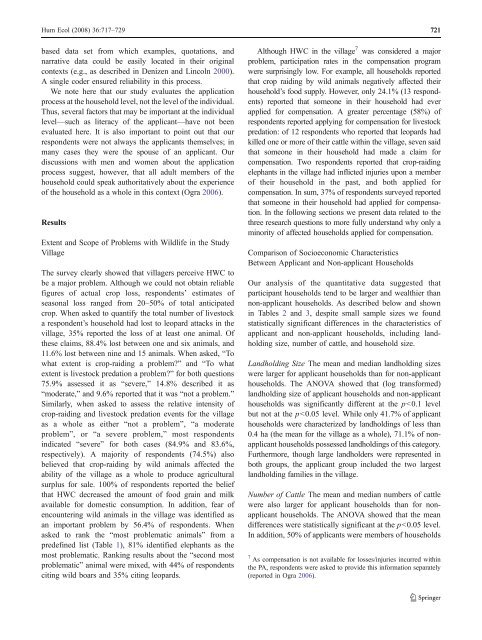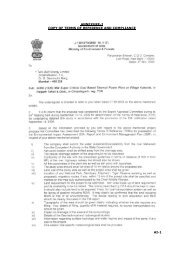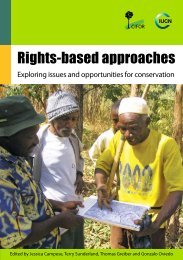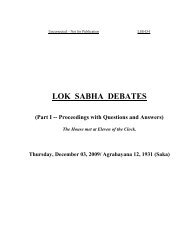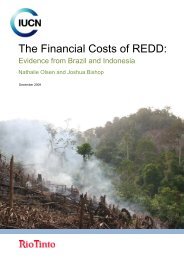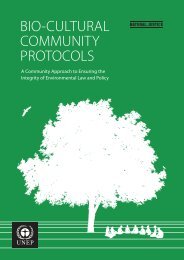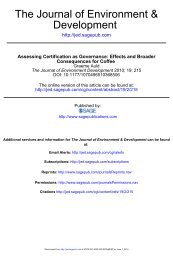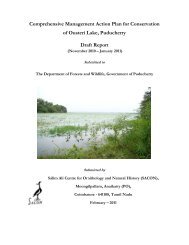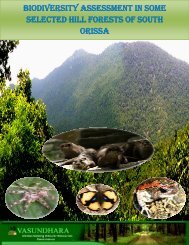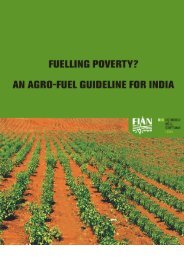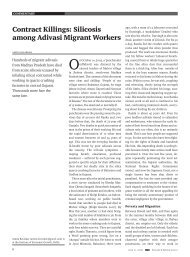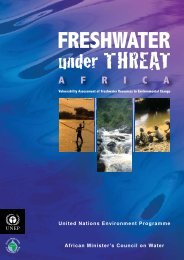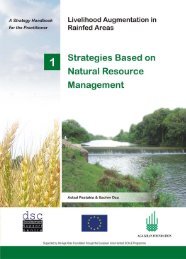Compensating Human–Wildlife Conflict in Protected Area - India ...
Compensating Human–Wildlife Conflict in Protected Area - India ...
Compensating Human–Wildlife Conflict in Protected Area - India ...
You also want an ePaper? Increase the reach of your titles
YUMPU automatically turns print PDFs into web optimized ePapers that Google loves.
Hum Ecol (2008) 36:717–729 721<br />
based data set from which examples, quotations, and<br />
narrative data could be easily located <strong>in</strong> their orig<strong>in</strong>al<br />
contexts (e.g., as described <strong>in</strong> Denizen and L<strong>in</strong>coln 2000).<br />
A s<strong>in</strong>gle coder ensured reliability <strong>in</strong> this process.<br />
We note here that our study evaluates the application<br />
process at the household level, not the level of the <strong>in</strong>dividual.<br />
Thus, several factors that may be important at the <strong>in</strong>dividual<br />
level—such as literacy of the applicant—have not been<br />
evaluated here. It is also important to po<strong>in</strong>t out that our<br />
respondents were not always the applicants themselves; <strong>in</strong><br />
many cases they were the spouse of an applicant. Our<br />
discussions with men and women about the application<br />
process suggest, however, that all adult members of the<br />
household could speak authoritatively about the experience<br />
of the household as a whole <strong>in</strong> this context (Ogra 2006).<br />
Results<br />
Extent and Scope of Problems with Wildlife <strong>in</strong> the Study<br />
Village<br />
The survey clearly showed that villagers perceive HWC to<br />
be a major problem. Although we could not obta<strong>in</strong> reliable<br />
figures of actual crop loss, respondents’ estimates of<br />
seasonal loss ranged from 20–50% of total anticipated<br />
crop. When asked to quantify the total number of livestock<br />
a respondent’s household had lost to leopard attacks <strong>in</strong> the<br />
village, 35% reported the loss of at least one animal. Of<br />
these claims, 88.4% lost between one and six animals, and<br />
11.6% lost between n<strong>in</strong>e and 15 animals. When asked, “To<br />
what extent is crop-raid<strong>in</strong>g a problem?” and “To what<br />
extent is livestock predation a problem?” for both questions<br />
75.9% assessed it as “severe,” 14.8% described it as<br />
“moderate,” and 9.6% reported that it was “not a problem.”<br />
Similarly, when asked to assess the relative <strong>in</strong>tensity of<br />
crop-raid<strong>in</strong>g and livestock predation events for the village<br />
as a whole as either “not a problem”, “a moderate<br />
problem”, or “a severe problem,” most respondents<br />
<strong>in</strong>dicated “severe” for both cases (84.9% and 83.6%,<br />
respectively). A majority of respondents (74.5%) also<br />
believed that crop-raid<strong>in</strong>g by wild animals affected the<br />
ability of the village as a whole to produce agricultural<br />
surplus for sale. 100% of respondents reported the belief<br />
that HWC decreased the amount of food gra<strong>in</strong> and milk<br />
available for domestic consumption. In addition, fear of<br />
encounter<strong>in</strong>g wild animals <strong>in</strong> the village was identified as<br />
an important problem by 56.4% of respondents. When<br />
asked to rank the “most problematic animals” from a<br />
predef<strong>in</strong>ed list (Table 1), 81% identified elephants as the<br />
most problematic. Rank<strong>in</strong>g results about the “second most<br />
problematic” animal were mixed, with 44% of respondents<br />
cit<strong>in</strong>g wild boars and 35% cit<strong>in</strong>g leopards.<br />
Although HWC <strong>in</strong> the village 7 was considered a major<br />
problem, participation rates <strong>in</strong> the compensation program<br />
were surpris<strong>in</strong>gly low. For example, all households reported<br />
that crop raid<strong>in</strong>g by wild animals negatively affected their<br />
household’s food supply. However, only 24.1% (13 respondents)<br />
reported that someone <strong>in</strong> their household had ever<br />
applied for compensation. A greater percentage (58%) of<br />
respondents reported apply<strong>in</strong>g for compensation for livestock<br />
predation: of 12 respondents who reported that leopards had<br />
killed one or more of their cattle with<strong>in</strong> the village, seven said<br />
that someone <strong>in</strong> their household had made a claim for<br />
compensation. Two respondents reported that crop-raid<strong>in</strong>g<br />
elephants <strong>in</strong> the village had <strong>in</strong>flicted <strong>in</strong>juries upon a member<br />
of their household <strong>in</strong> the past, and both applied for<br />
compensation. In sum, 37% of respondents surveyed reported<br />
that someone <strong>in</strong> their household had applied for compensation.<br />
In the follow<strong>in</strong>g sections we present data related to the<br />
three research questions to more fully understand why only a<br />
m<strong>in</strong>ority of affected households applied for compensation.<br />
Comparison of Socioeconomic Characteristics<br />
Between Applicant and Non-applicant Households<br />
Our analysis of the quantitative data suggested that<br />
participant households tend to be larger and wealthier than<br />
non-applicant households. As described below and shown<br />
<strong>in</strong> Tables 2 and 3, despite small sample sizes we found<br />
statistically significant differences <strong>in</strong> the characteristics of<br />
applicant and non-applicant households, <strong>in</strong>clud<strong>in</strong>g landhold<strong>in</strong>g<br />
size, number of cattle, and household size.<br />
Landhold<strong>in</strong>g Size The mean and median landhold<strong>in</strong>g sizes<br />
were larger for applicant households than for non-applicant<br />
households. The ANOVA showed that (log transformed)<br />
landhold<strong>in</strong>g size of applicant households and non-applicant<br />
households was significantly different at the p


